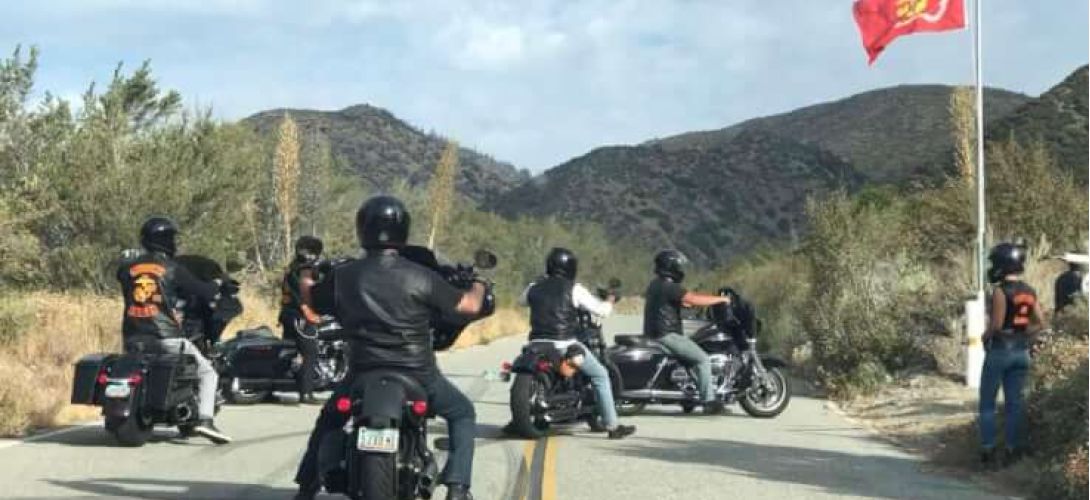-
Understanding Motorcycle Formation And Group Riding | Planning, Hand Signals, Road Mishaps
-
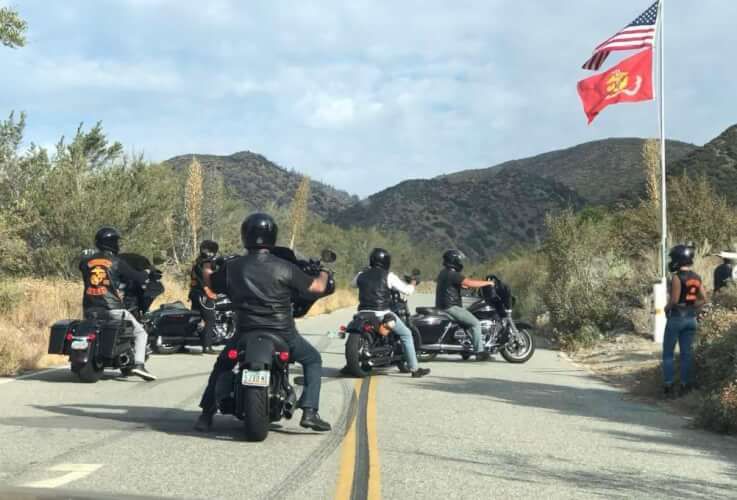
Understanding Motorcycle Formation And Group Riding | Planning, Hand Signals, Road Mishaps
Motorcycle Riding In Formations Can Be Fun If Done Right – But Accidents Happen
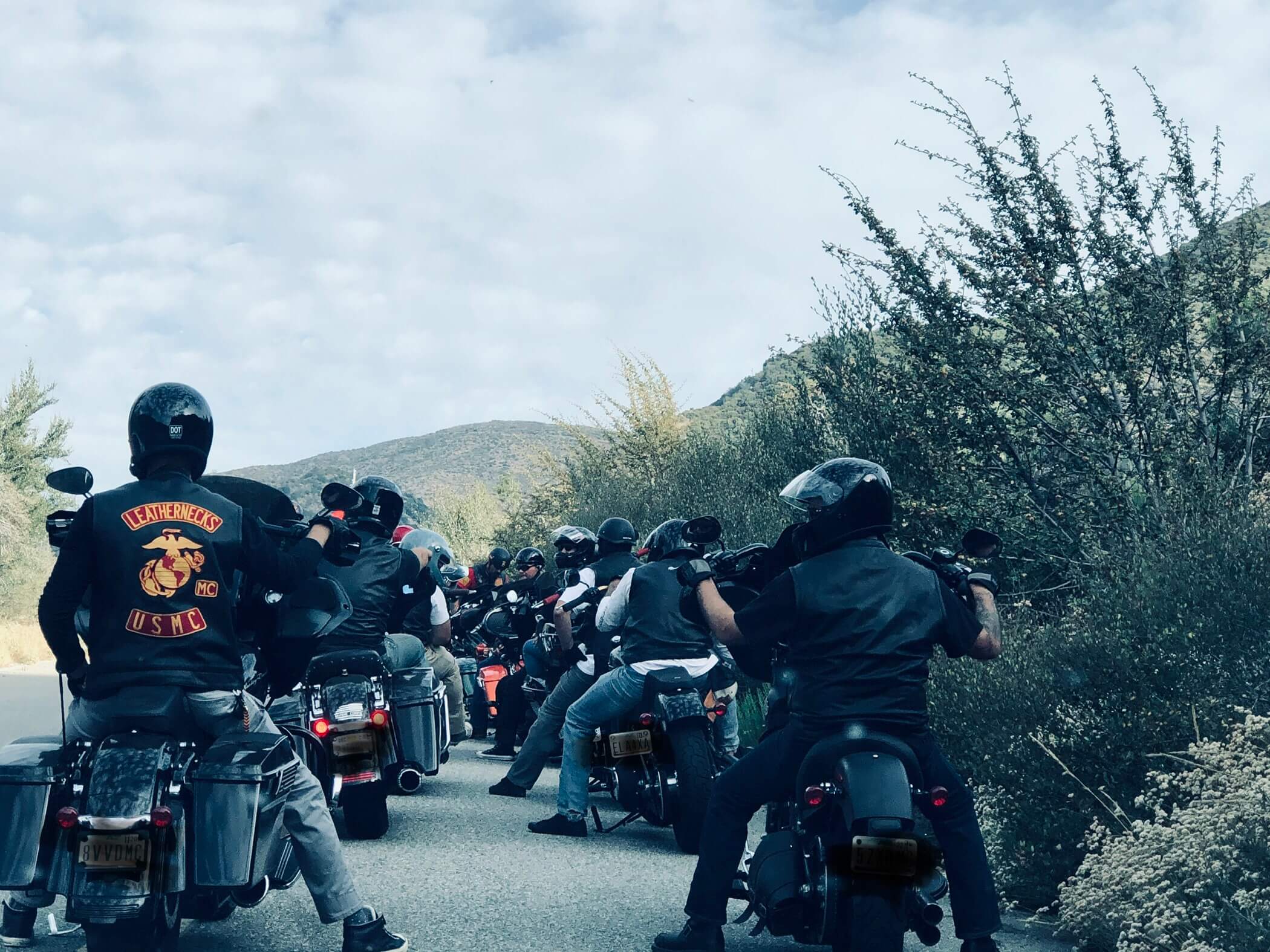
Many independent riders enjoy the fun and excitement of riding alone, while others prefer the safety and camaraderie of group and formation riding. I am attorney Michael Ehline. As a Los Angeles motorcycle lawyer for over 15 years, I know much about motorcycle riding, rules, and regulations. I became a car accident attorney upon passing the Bar in 2005, quickly finding most of my cases involved military personnel, especially Marines, as my clients.
Whatever the goal is, learning motorcycle basics and conducting a pre-ride safety inspection and huddle can help chart out targets and what everyone will do in the case of an accident. By the time you are ready to ride in a group, you will already have taken a motorcycle safety course and obtained a California motorcycle license or rider’s permit at a bare minimum.
Trained riders should already know how to deal with real-time road traffic, such as:
- Effective turning
- Effective braking
- Obstacle avoidance maneuvers
- Protective riding attire choices
- Safe traffic maneuvering strategies
- Basic vehicle maintenance.
During the pre-ride safety meeting, educated and even advanced riders must be warned about the dangers of left-hand turns, lane sharing, and intersection collisions. They need to fall back on their knowledge and training, and this refresher helps riders recall their prior teachings. For example, the Hells Angels Motorcycle Club™ is famous for staying with their fallen brothers at the hospital ER if a rider goes down. Some clubs have a supply train reminiscent of a military force that includes cars, motorcycle trailers, vehicles with tools and medical equipment, food, water, and other survival necessities.
Of course, hardcore bikers are into the rough and ready lifestyle more so than a doctor or lawyer may be. Less serious motorcycle enthusiasts and many newer female riders may have different goals. Moreover, they may seek different experiences than a one %er MC, like a sisterhood. There are many theme-based, non-three-patch clubs, perhaps with enduro-type cycles used by close friends or family to cruise through tundra and back to their cabins or homes. In other words, not everyone rides a Harley. We see a lot of this in places like Alaska and Montana.
Street Rider Clubs
But in Los Angeles, we see a lot more street rider clubs that include Japanese motorcycles, called “rice rockets” by purists in outlaw groups or outlaw motorcycle gangs (“OMG”). Together you can enjoy the scenery from the open road and arrive safely at your destination with a few suggested guidelines. As we get into the more three-patch severe clubs, we see glaring military similarities in group discipline. At the top of the food chain, we see the OMGs competing on many levels. One is riding in formation. When it comes to close order drill formation riding, if regular AMA riding associations were Air Force or Army, then Outlaw 1%er clubs would all have to be competing U.S. Marines divisions. Marines are known for their close-order drill, sharpness, and steely discipline for a reason.
For example, we know that the Hells Angels came from World War Two bomber crews and evolved into the modern Red and White. But did you know a U.S. Marine formed the Bandidos? Military vets seem drawn to these more disciplined clubs and the unit cohesion and loyalty created by the close-order drill. Not all three patch clubs are OMGs, yet even some law enforcement member-based clubs emulate the strict formations made famous by 1%ers. The main distinction is that most top clubs do not stagger formations. They ride nut to butt. And they don’t like having their appearance passed by other riders without a show of respect.
Below we will talk about riding in groups, formation riding, and what greenhorn riders must understand before engaging in choreographed group behavior on wheels.
How Do I Form A Motorcycle Riding Group?
Whether you are a hang-around, prospect, or leisure rider, the first step in group/formation riding is creating a motorcycle riding group. Once your gaggle of troops is rounded up, you must set up your formation on paper. Like the military, most clubs use a rank-based approach, usually based on time in grade, prior training, and missions.
For example, a US Marine supply officer typically will not be leading a MARSOC Team. No, that will likely be a non-commission officer like a Gunny. Gunny can instruct that supply officer to “get lost” if he attempts to interfere with tactical success or planning.
A typical rank structure for a successful formation ride is as follows:
- Road Captain and President – They will usually be the lead bikes. The road Captain could be akin to a Sergeant Major, and the president could be looked upon as the commanding officer, or C/O, maybe similar to a colonel. These two are responsible for overall mission success. The Road Captain is usually the active “pack leader.” Typically, they are the more intelligent of the bunch, and they will plan mapped routes, break and recreation points, and spot road decisions. For example, the Road Captain’s job is to direct formation lane passing. It’s a significant responsibility. As discussed more below, the Road Captain will communicate formation instructions using a simple series of universally understood hand and body movements.
- Sgt. at Arms and Vice President – These men are like your Gunny and Executive officer (X/O).
- Patches – For Outlaws, Three Patch members are akin to lance corporals up to Staff Sergeants, riding in groups of two. For others, it’s the same general idea—less experienced riders in the rear with the gear.
- Prospects are like privates or recruits. They are hazed and forced to eat exhaust fumes in the rear of the gaggle. Again, they ride in groups of two in strict formation.
- Supporters, associates, friends, allies, WAGS, and tagalongs, are next in line, riding in groups of two.
Above is a typical formation with the most experienced at the lead in a structured pecking order behind following in groups of twos. Most clubs utilize hand signals to communicate turns and other commands. Again, so very military. How many in the formation and rider experience will dictate how advanced and disciplined you want to ride as a group.
For example, it is recommended for safety to ride in a staggered formation alongside each other but with one rider a bit fore and another a bit aft, similar to how a chain’s links might look. That way, if another biker runs into trouble, other formation members will have some time to react and avoid a crash.
Leadership Remains Key!
As noted above, the group riding leader should be among the most experienced and willing to take on the role. The lead rider is generally the first to encounter other vehicular traffic, coming and going. The leading rider must know how to respond to erratic and distracted drivers appropriately. And the lead rider must respond, react, and avoid problems carefully before other passengers in the group become seriously injured or killed.
The next most prominent and experienced rider remains the “tail rider.” Often this is the rider who plays catch up after making sure the other riders made it safely through a traffic signal or intersection. The tail rider should also keep an eye on stragglers and bikes with mechanical breakdowns, so they don’t become stranded or abandoned in some desolate location with no phone signal, for example. Most of all, the riding group should look out for each other and take personal leadership initiative when called upon.
Here are some essential pre-ride tips and considerations before group riding.
All veteran riders should:
- Teach other riders not to hog the narrow roadway and maintain a cushion of space. Or you are driving side by side.
- Pair up a novice rider (someone who has ridden a bike less than 1,000 miles) with a more veteran rider. Imagine a two-person fire team, for example.
- Be alert, scanning for riders falling behind in the group. (More pre-ride safety tips are found here).
Top Safety Tips For Formation And Group Riding
Group riding etiquette dictates that each rider’s skill level should be a significant factor in forming a motorcycle riding group. Timid and green riders need a mentor to teach them the ropes until they are more comfortable with the situations that can pop up. A significant factor in group choice is how fast the riding formation intends to travel. Some more veteran bikers may like the thrill of speed. So they can ride up front and break away as point men.
Novice riders may want to join a group that wants to ride at a slower pace. There are a lot of people with bagger bikes who choose these groups. Feeling pressured and guilty by not wanting to ride at a speed faster than you’re comfortable with remains a heavy burden for many. So join a group of like-minded individuals.
TIP: Loud pipes save lives! Consider custom exhausts or a loud bike. Many experienced riders are keen on the idea that a car can hear and not just see you show your dominance and presence in road traffic. A helmet’s hearing protection may need to be supplemented for all riders in the group to avoid hearing damage or loss. Moreover, riders with extremely loud pipes like race pipes or open mufflers may wish to stay in the rear to prevent rumbling and jolting the rest of the riding formation. So if you have available pipes or a race muffler, consider riding at the far back of the riding group.
Most Of All, Preparation, And Planning Remain Key.
An ounce of prevention is worth a pound of cure. Motorcycle accidents, especially in formations, can quickly result in a life-altering event that affects everyone in the rider’s life. Proper motorcycle group riding protocol dictates all riders respect certain customs and protocols. So, prepare at that tailgate safety meeting and go back over the basics often. Moreover, riders should show up ready to ride with no mechanical or bodily impediments.
Clear your bowels and top off your motorcycle tank and stomach tank. Make sure and eat a nutritious meal beforehand. And make sure to drink a lot of water! Staying hydrated is one way your brain remains healthy.
For Example, Riders Should:
- Fuel up their motorcycle tanks.
- Carry a fully charged smartphone with an active GPS in case of emergencies.
- Carry a paper road map with the road routes highlighted with a marker.
- Carry a small first – aid kit and toolkit for loose nuts, bolts, brake line adjustments, repairs, etc.
- Check tire pressure and inflate tires.
- Warm-up tires to grip.
- Check coolant and oil levels.
- Take plenty of road breaks, especially if your pack is new to riding in a group and you have some less experienced riders.
- Keep the riding group’s size workable – While group riding, cyclists may encounter winding pathways, curvy on-ramps, and straight, open-throttle sections of the highways.
- Stagger your riding formation – The road captain typically rides on the lane’s left side in a staggered formation. During the ride, the group will encounter straight and curvy sections of the road. The lead rider often takes the left third of the formation’s riding lane in the linear area. Because of this, the rider may more easily see roadway traffic far ahead. Most of all, if an obstacle or oncoming vehicle traffic presents a hazard, a series of signals can be relayed back to the primary formation to take evasive safety maneuvers. Timing the distance in seconds is part of the idea here. For example, each rider should make the best effort to travel at least one second behind the other in a staggered formation. Most reputable riding clubs suggest that newer riders keep their group sizes down to 7 passengers or less. But even if there are more riders than that, have them create a subgroup and hit the streets on your exact route. True, more advanced riders and OMGs prefer tight formations. But newer riders should keep a cushion of space to allow for swerving or heavy braking if needed.
CAVEAT: If your group is cruising on curvy roads or in low or poor visibility conditions create poor visibility conditions, consider using a single-file rider formation. Moreover, in these cases, increase follow seconds to two. As noted, there should always be a lead and sweep team.
- Stay aware of your group’s riders while formation riding – Each biker must scan the road and their rearview mirrors in a regular fashion. Keeping an eye far ahead in steering and aiming high toward the road captain allows you to notice upcoming hand signals and other riding behaviors.
- Have a plan for pack separation – Like a good ship’s captain, make sure you have an idea to reform if a group of riders separates. Otherwise, the stray rider may violate traffic regulations to catch up, which is unsafe. As we say in the Marines, we are as fast as our slowest man. So a good riding group will slow down to allow stragglers to get back into the group.
- Know how to reform the group if a rider must fall out – Let’s say that a passenger has plans to peel away from the group at a particular departure point. In that case, the group should have a plan to reassemble the staggered riding formation. Leaving a gap is terrible because a car can bull in. The best way to fill the gap is to allow the next rider to move up to the next position in the chain of succession. Another advantage to this mode of filling in is that no riders have to pass each other within a shared, single lane.
- They were passing vehicles when safe (Overtaking) – Sometimes, there are just slow-moving vehicles that pose a threat to your safety. Because of this, riders must learn how to safely overtake and pass the car in the lane ahead of them. First of all, do not do that in a group. Do it one at a time and only when safe. Afterward, the riders waiting for their turns need to move up in their position until another shot at passing materializes. After passing, enough space must be left in front of the blocking vehicle behind the motorcycle next in line. So keep your speed up so the next bike can take that space. That gap remains crucial to avoid any rear-end accidents.
- Know the skill level of each group rider – Every group will have variable riding experience. The key is to keep each rider comfortable and safe, so having the least experience toward the middle of the pack is recommended. This position will allow them a visual guide from motorists in the front to indicate oncoming items to note (like traffic and road conditions). More experienced riders behind them will keep aggressive drivers from disturbing them from the rear. The lead and tail riders should have the best experience adjusting to traffic and protecting the other riders from traffic and road debris. Your most novice riders should also determine when and where to take breaks.
- Use your hand signals and other nonverbal communication – All group members should know the bare hand motorcycle rider arm and hand signals. And everyone should also understand nonverbal body language in a group riding environment.
- Take adequate rest breaks – Letting people pee, eat, and stretch helps them become more comfortable and happy. Staying hydrated and checking the bike out from time to time are essential factors in safe riding. Moreover, being tired means, there is a higher chance of crashing.
What Not To Do While on a Group Ride
It’s equal to knowing what to do when riding in a group. Here are equally essential behaviors to avoid, according to MSF:
- Don’t ride side-by-side, right next to each other in the same lane. Proper, the 1%ers and top MCs do this. But these are riders who have ridden potentially millions of miles. And if you don’t have enough room, forget it, road pizza. So allow room to swerve and avoid hazards like oncoming trucks, buses, and passenger vehicles.
- No hot-rodding or showboating. Don’t toot your own horn. Being a show-off in a group formation can get people killed. This is not Top Gun. Don’t play chicken, tailgate others, or act like a dick.
- Don’t forget your safety apparel and equipment. Always select a proper helmet, preferably one with full-face protection. A speck of dust at 70 miles per hour can blind a rider. So always wear eye protection. And never forget your riding boots, chaps, and unique padded pants and jackets. Keep your body protected.
Know Your Motorcycle Hand, Arm, And Other Signals And Signs
Hand signals have been used since the dawn of time. Some cultures, such as the Italians, slowly and culturally rely upon these non-verbal cues to communicate emotions and thoughts. In military situations of old, before we had radios and other comm lines, the noise and calamity of battle gave rise to the modern Army Signal Corps. Using various hand and arm signals in conjunction with unit guide-ons and standards was vital in managing both large and small unit formations on the battlefield.
Group riders cannot always rely upon radio communications to dictate riding as a horde. But other nonverbal communication remains very efficient for the safe formation of motorcycle riding. Typically, the riding group formation’s command structure will filter down commands via a series of hand, arm, and other signals, such as leaning a bike or pointing the head in a specific direction. Most of all, these signals can assist riders in avoiding nasty hazards like potholes, pieces of garbage, gravel, construction nails, and other dangerous things ahead. But what if you are having a mechanical problem with your motorcycle?
Or what if it’s not safe to speed up to pass a vehicle? What if the group needs to slow down due to bad weather or a police checkpoint ahead? What if someone needs to make a fuel and restroom call? The good news, there is a human-created signal for each of these situations. So part of group riding means educating yourself properly using the hand, arm, and other communication signals.
What Are 18 Motorcycle Riding Hand And Arm Signals All Riders Should Know?
- How Do I Signal A Motorcycle Left-Hand Turn? Typically it would help if you use your blinkers. But what if they don’t operate properly? What then? If you want to signal a left-hand turn, extend your left arm out straight at a 90-degree angle with your body, with your palm facing down.
- How Do I Signal A Motorcycle Right-Hand Turn? This one is a bit different. Motorcycle riders use the right hand to throttle their motorcycle’s speed and control the handbrake. To avoid a decrease in rate while using the right hand to signal, which can cause a crash, you will use your left hand to signal. To do so, extend your left arm and bend it at the elbow joint. Make sure your hand points towards the sky.
- How Do I Signal A Motorcycle Stop? Again, assuming your brake lights are out, you need to alert other drivers of your intentions to stop. Do this by extending your left arm with the palm facing back.
- How Do I Signal A Motorcycle Hazard In The Roadway? If other motorcyclists are riding behind you, courtesy and safety dictate that you try to identify road hazards you come upon to save lives. Risks include a dead animal, a deer crossing the road, oil, grease, water pools, potholes, racks, mud, gravel, or another crashed vehicle blocking the lanes.
- If it is on the left, signal others by pointing out the object with your left hand extended at a 45-degree angle.
- If the hazard is on your right, signal the risk by extending your right leg and pointing your right foot toward the danger.
- How Do I Signal Police Ahead? This is among the most critical signals for riders. For example, speed traps and DUI checkpoints can be spotted and avoided. The way to warn other motorists is to use your left hand to tap the top of your helmet a few times. Now others in the formation can make speed adjustments so you can avoid a nasty traffic citation.
- How Do I Signal A Motorcycle Single File? Your arm and index finger will extend straight up.
- How Do I Signal A Motorcycle Double File? Here your arm with index and middle finger remain extended straight up.
- How Do I Signal Speed Up? Your arm will remain extended straight out, with palms facing up, swinging upward.
- How Do I Signal Slow Down? Your arm remains extended straight out, palm facing down, swinging down to your side.
- How Do I Signal to Follow Me? In this signal, your arm extends straight up from the shoulder, palm forward.
- How Do I Signal You Lead/Come? Here, the arm extends upward 45 degrees, palm forward, pointing with the index finger, swinging in an arc from back to front.
- How Do I Signal High-beams On? Here the rider taps on the top of the helmet with an open palm down.
- How Do I Signal Fuel Stop? In this case, the arm goes out to the side, pointing to the tank with an extended finger.
- How Do I Signal Comfort Stop? Here, the forearm remains extended, fist clenched with short up and down motion.
- How Do I Signal Refreshment Break? Stop fingers closed, thumb to mouth.
- How Do I Signal Turn Signal On? Open and close your hand with your fingers and thumb extended.
- How Do I Signal to Pull Off? Arm positioned as for right turn; forearm swung toward the shoulder.
- How Do I Signal “Asshole”? – Curl fingers back and angrily raise the middle finger? (See the below infographic)
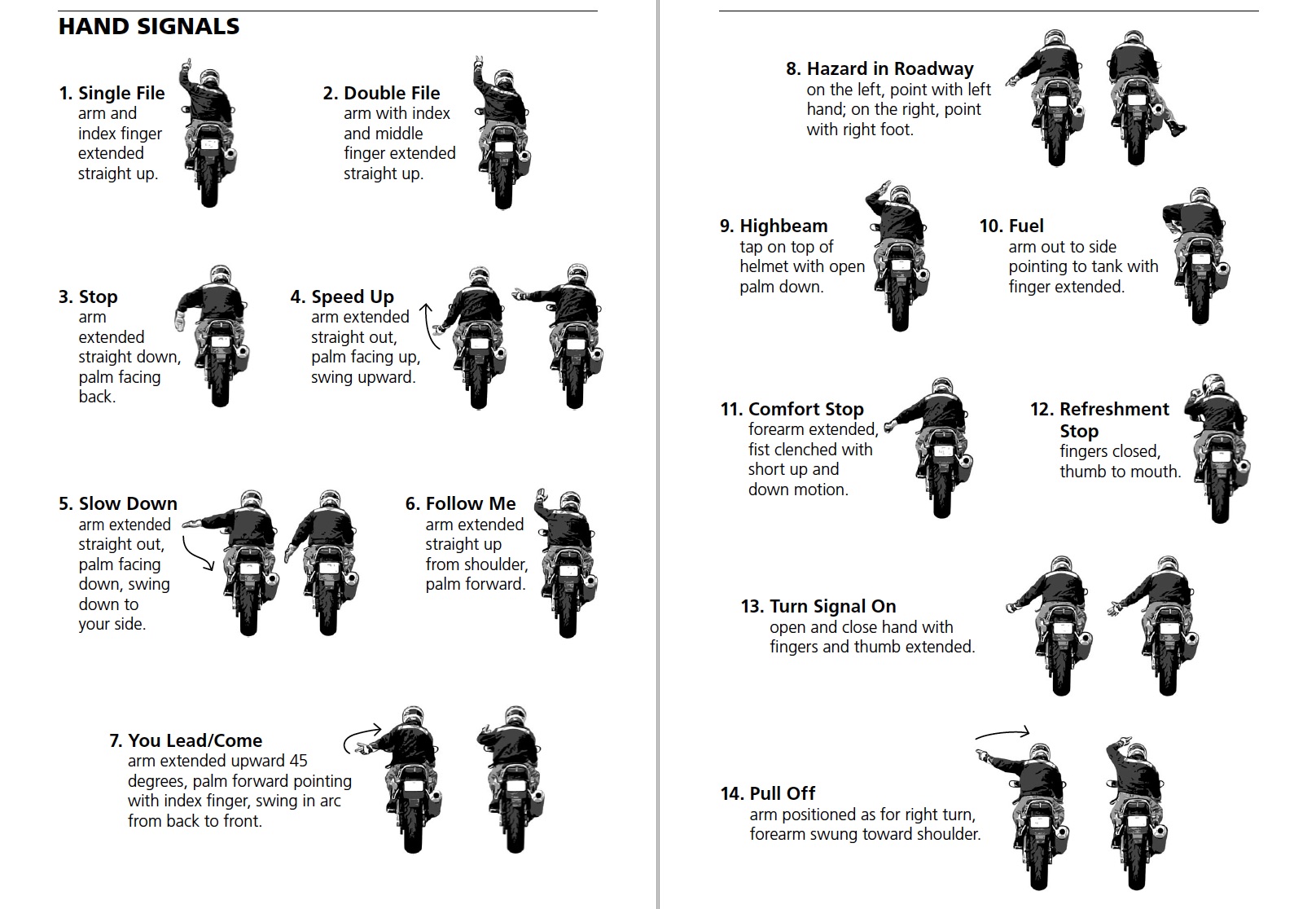
Common Injuries In Group Formation Riding Accidents.
As noted below, getting hit by a flying object is a severe risk of formation riding. Don’t forget that riding with a child on your motorcycle means a different set of circumstances and risks that increase in formation riding.
Common injuries in motorcycle formation riding include:
- Wrongful death
- Facial fractures
- Wrist fractures
- Arm and leg fractures
- Frictions burns, road rash, and permanent scarring
- Spinal cord injuries
- Broken teeth
- Blindness
- Crush injuries
- Lacerations
- Puncture wounds
- Burn injuries
- Brain Injuries.
Common Causes Of Formation Accidents And Who Is At Fault?
Formation riding comes with many safety benefits. But it also comes with many risks. For example, a loose or poorly maintained party flying off a motorcycle can pierce or impale another group member. If one bike goes down, the rear riders risk a chain pile-up collision and running over each other at high speeds. Death from another rider or automobile is a severe risk to each rider.
Plaintiff’s Burden?
The plaintiff has the burden of proving each element of their cases. A rider hurt by the fault of another person is the plaintiff. The person being sued or claimed against is the defendant. Sometimes the acts of many defendants join together in a chain of events that leads to injury or death. In that case, the defendants are deemed jointly and severally liable for the plaintiff’s damages minus the plaintiff’s degree of fault under California’s pure comparative negligence laws.
The burden to prove is that the defendants owed a duty not to place the plaintiff in harm and that defendant breached the duty. That plaintiff suffered actual damages caused by the breach, resulting in injury to a person or property. Damages are the monies paid out to a personal injury plaintiff.
Who Can Be A Defendant?
True, even your riding group members could be partially or wholly at fault for any formation riding incidents. Below is a list of some possible defendants depending on the facts.
- Road Captains? What if they were negligent in directing your riding group into harm’s way?
- CalTrans/State. Think of poor or negligent maintenance like open utility hole covers and potholes.
- Other Riders In The Gaggle? Think about loose parts flying off, or hard braking,
- Other Vehicles Bullying Into The Formation. Think about cars or road racers trying to get in between the riding formation, cutting riders off at intersections, etc.
- Show-offs. Show-offs and rogue riders in your formation are major accidents waiting to happen. Weed these people out, or you could be pushing up daisies.
- Manufacturers of motorcycle and motorcycle parts.
- Mechanics and re-manufacturers.
- Private road maintenance crews.
What Can A Rider Or Survivor Recover For Motorcycle Rider Personal Injury Or Death Claims?
- Special Damages: A fallen rider or their survivor has the right to seek monetary damages for medical bills, ambulance expenses, long-term medical care and lost wages on contracts, etc.
- General Damages: Injured riders can seek monetary damages for intangibles like their past, present, and future pain and suffering.
- Punitive Damages: In extreme cases of intentional conduct or recklessness, plaintiffs can seek special damages to punish the defendant.
How Do I Know If I Have A Viable Motorcycle Formation Riding Injury Case?
To recap, abiding by agreed-upon group riding rules helps your entire formation stay on the same page. Now everyone is better prepared for what lies ahead. Group riding brings excitement and adventure to motorcycling using advanced planning and veteran rider experience to make the riding journey safer. Keep all the basics in mind while always understanding that accidents can happen out of the blue.
If you were injured in a group riding accident or suffered a loved one’s death, you would face many challenges dealing with grief and paying bills. This may start to overwhelm you. Don’t let that happen. Ehline Law Firm personal injury attorneys, APLC, offers free phone consultations to explain your legal rights and how insurance claims work.
With personal injury law office locations in Torrance, Redondo Beach, Marina del Rey, and Downtown Los Angeles, we are the go-to attorney for great results, compassion, and care. And we are all over Northern and Southern California as well. Don’t let the 24-month statute of limitations expire in your injury claim. Let us help get you money! Call us now at (213) 596-9642.
Categories
- A to Z Personal Injury Podcast
- Auto Accident Blog
- Brain Injury Blog
- Burn Injury Blog
- Civil Rights Blog
- Death Law Blog
- Dog Bite Blog
- Elder Nursing Abuse Blog
- Government Tort Blog
- Insurance Law Blog
- Piloting and Aviation Accident Blog
- Premises Liability Blog
- Products Defect Blog
- Recreation-Sports Accident Blog
- Reports
- Sea Admiralty Maritime Accidents
- Service Related Cancer Blog
- Sexual Assault Blog
- Spinal Cord Injury Blog
- Torts, Examples, Explanations
- Train Accidents Blog
- TV, Media & Firm News
- Uncategorized
Firm Archive
Main Los Angeles Location
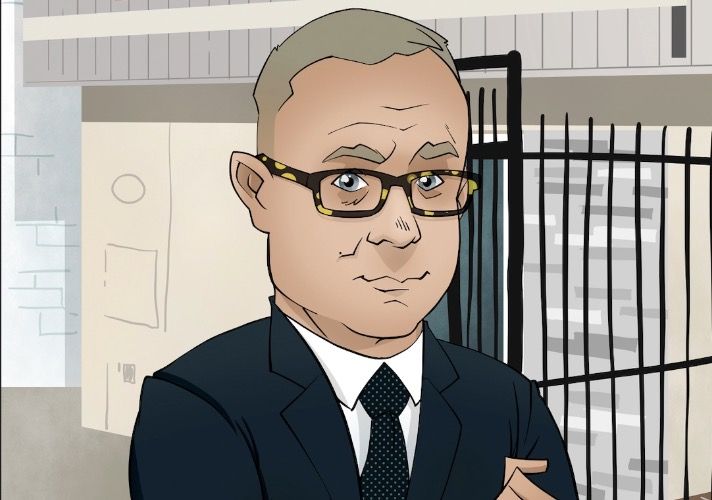

Michael Ehline
Michael Ehline is an inactive U.S. Marine and world-famous legal historian. Michael helped draft the Cruise Ship Safety Act and has won some of U.S. history’s largest motorcycle accident settlements. Together with his legal team, Michael and the Ehline Law Firm collect damages on behalf of clients. We pride ourselves on being available to answer your most pressing and difficult questions 24/7. We are proud sponsors of the Paul Ehline Memorial Motorcycle Ride and a Service Disabled Veteran Operated Business. (SDVOB.) We are ready to fight.

